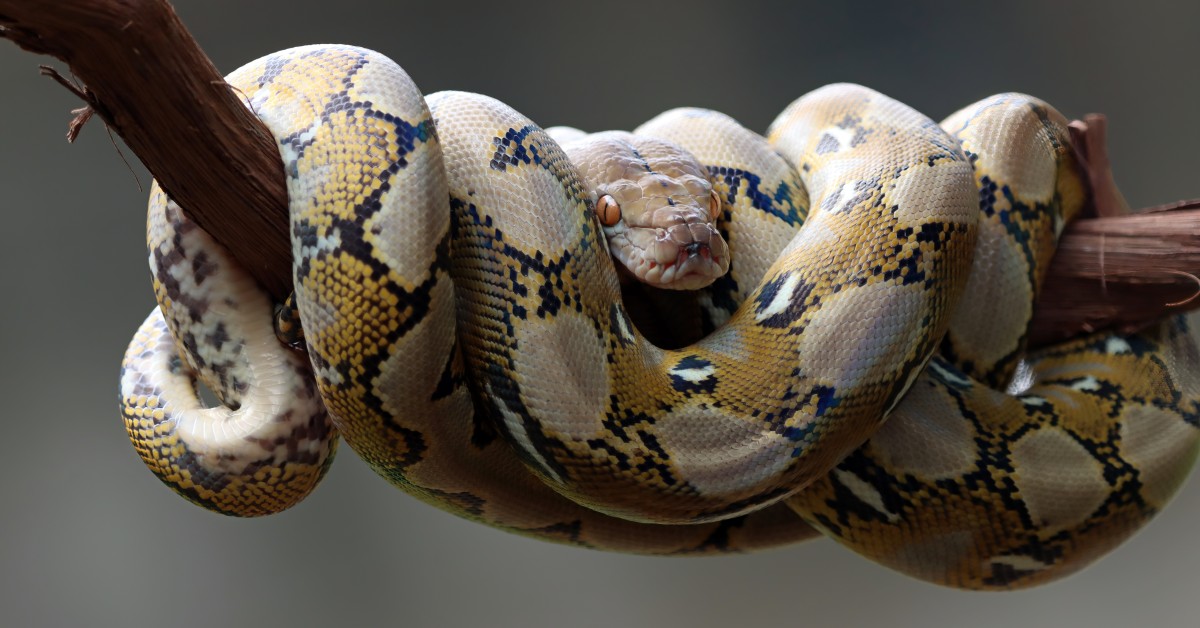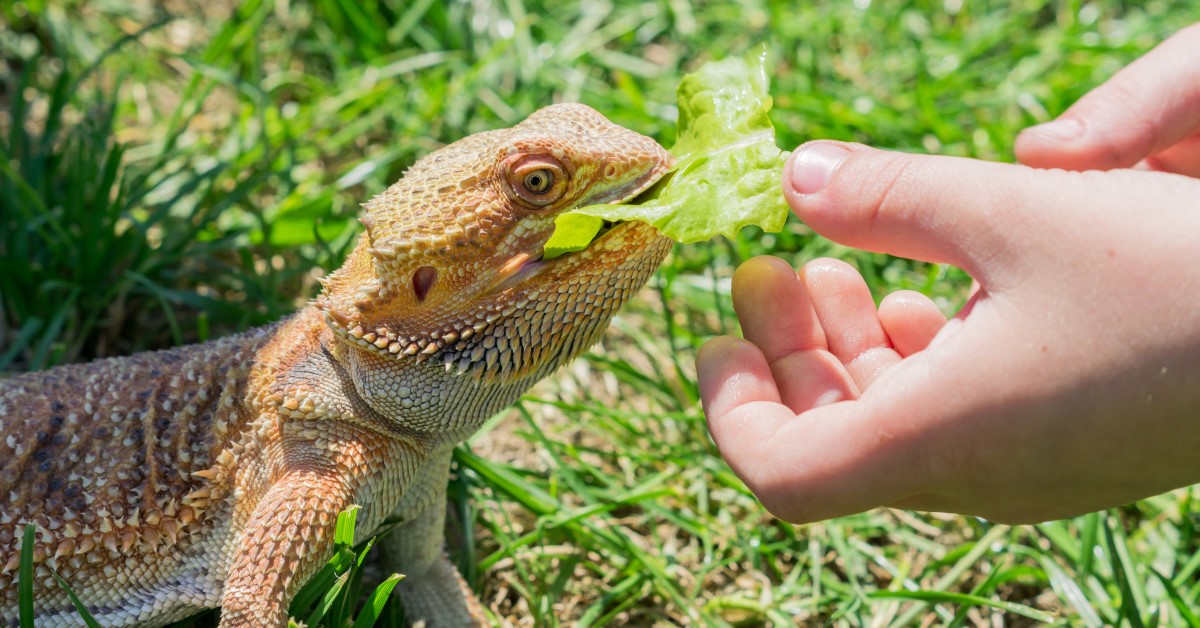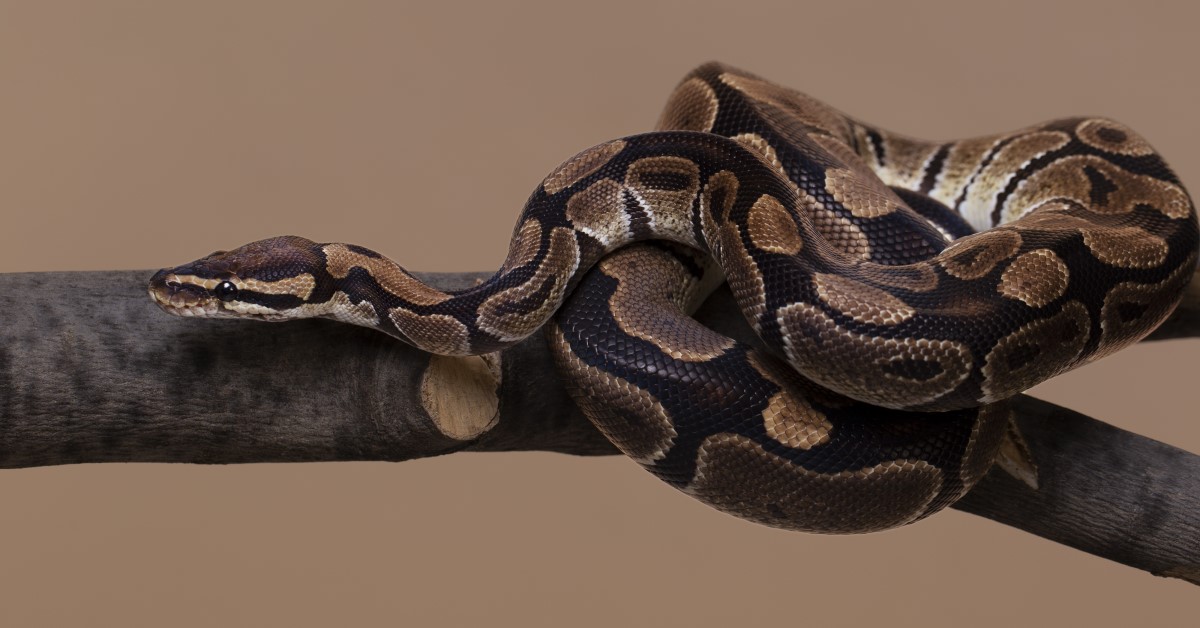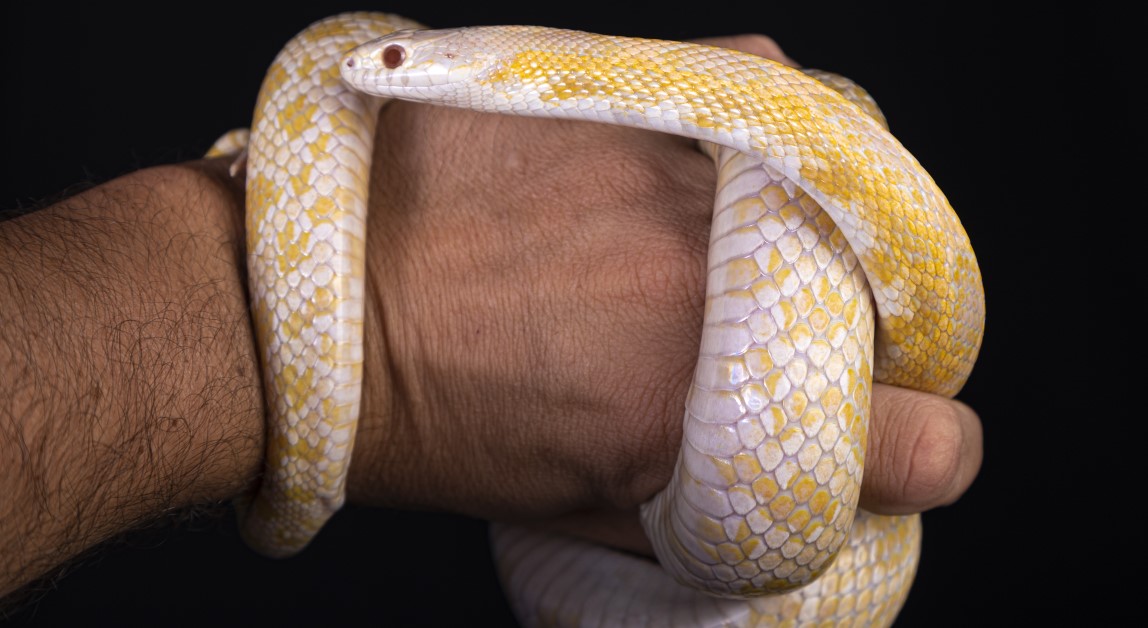Pet Pythons: A Question of Safety
Before you adopt a python as a pet snake, make sure you understand these safety considerations.

If you'd like a more unusual pet than the standard-issue dog or cat, you may find yourself drawn to exotic animals such as snakes. You might even be fascinated by the idea of caring for a python -- yet at the same time, you may be worried about what kinds of dangers that situation might entail. Let's examine the issue of whether you should keep a python as a pet, and any safety concerns you should be aware of before committing.
Python Characteristics
First, it's useful to understand what makes a python a python. These creatures belong to a larger group of snakes classified as constrictors. Constrictors don't have fangs and venom because they don't kill their prey by biting and poisoning them. Instead, constrictors wrap themselves around their prey and use the strong muscles of their body to squeeze it to death.
Unlike some snakes, pythons may be active either during the day or at night, lying in wait for their prey to come to them instead of seeking it out. Some pythons spend most of the time in trees, while others burrow into the ground. These snakes thrive in warm environments, from arid deserts to steamy jungles.
Dangers of Pythons for Humans
The image of a constrictor such as a python crushing and devouring a human is a common feature of horror and adventure films. Fortunately, the truth is that pythons rarely attack humans or view them as potential prey. However, exceptions to the rule have occurred in the wild. Reticulated pythons measuring over 20 feet long have killed and consumed adult humans, while the smaller Burmese python is still big enough to kill a child.
Fortunately, since different species of pythons can vary widely in length, you can avoid this danger simply by getting a smaller python. The most popular species among pet owners, the ball python, rarely grows longer than five feet, so it can't possibly kill or eat a human. Green tree pythons and pygmy pythons also fall within the safe zone in terms of their size ranges and prey preferences.
It's worth noting that, although you run no risk of being eaten, pet pythons do have teeth. If you make the mistake of feeding your pet python by hand without proper protection, you may sustain a painful bite as the python snaps up the food. Exercise special care during shedding season, as the scales covering your pet's eyes may limit its ability to tell the difference between your hand and the food.
The good news is that, while you certainly don't want to get bitten by a python, the bite shouldn't cause any complications beyond discomfort. As noted above, pythons don't have venomous fangs.
Python Dangers to Other Animals
While smaller pythons such as green pythons or ball pythons pose little threat to human safety, smaller animals may not be so lucky. Remember that pythons are carnivores, subsisting on live prey. For example, even a young, smallish ball python can easily eat a baby mouse, while adult ball pythons commonly consume grown rodents at mealtimes. So if you raise rats or mice in your home as pets, keep them well away from your python's enclosure!
The larger the python, the more of a safety threat it poses to other pets. If you make the mistake of adopting a Burmese python, you have a snake large enough to kill and consume a cat or small dog. Even if your python isn't big enough to eat your other pets, you don't want it to get close enough to impart a painful bite to a curious critter that sticks its nose where it isn't wanted.
Dangers to the Python Itself
Don't forget to consider the safety of your pet python itself. Your python's safety and well-being can involve a multitude of factors, from the temperature of the enclosure and the quality of the food it receives to germs that can cause serious health problems. Just as you want to safeguard your own well-being and that of your other pets, you must take the proper steps to keep your python safe and happy.
The enclosure you choose for your python should offer plenty of room to move around. Most adult pythons need a space measuring at least three feet in length, two feet in height, and two feet in width. If your python starts to outgrow its home, you'll have to purchase a larger enclosure. Make sure the enclosure includes screens or holes so your python can breathe easily.
Ball pythons benefit from plenty of substrate that allows them to burrow to their heart's content. Paper-based substrate makes a safe, healthy choice. If you have a tree-based python such as a green tree python, add branches so your pet can coil itself around them and hang from them, as it would in the wild.
Pythons require a temperature range of 70 to 90 degrees, otherwise their immune systems will fail and they'll be especially vulnerable to diseases. Check the enclosure's temperature every day to ensure a safe environment for your pet. Change the water regularly to help prevent illness.
Ask Your Exotic Vet About Python Safety Concerns
If you have any safety concerns regarding your python, consult an exotic animal veterinarian.This specialist can diagnose and treat common snake diseases, advise you on safe feeding and environmental practices, and generally help you live a safe, happy life with your scaly friend!
Ready to start saving money on pet wellness care?
Then take a look at Mint Wellness, the pet wellness plan that provides fast reimbursement on routine pet care. Save on vaccinations, wellness exams, preventatives, dental, and more!
Learn More


